Our Story
 Kingman Museum’s roots go deep into our community’s past. The first collections were acquired during the Civil War. When Central or No. 1 Building of the Battle Creek Public Schools opened on April 10, 1871, it contained a large “museum room” where these collections were displayed.
Kingman Museum’s roots go deep into our community’s past. The first collections were acquired during the Civil War. When Central or No. 1 Building of the Battle Creek Public Schools opened on April 10, 1871, it contained a large “museum room” where these collections were displayed.
As a high school student in 1871, Edward Morris Brigham helped his biology teacher and an interested custodian arrange a large rock, mineral, and fossil collection in the museum room of the high school, whetting his appetite for museum work.
While completing his studies at the University of Michigan, Brigham joined several expeditions to the Amazon River region of South America. This is where he came into his own as a collector, explorer, and discover of rare species. It was here 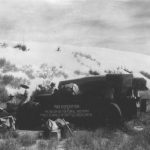 that he “discovered” and subsequently documented and published his findings on the rare hoatzin, a “four-footed” bird; the paper is still referenced by scholars today. Later in life, he also participated in other expeditions including Alaska and the Hawaiian Islands. During these expeditions, Brigham began to seriously build his private collection of cultural artifacts and fossils, which he eventually gave to Kingman Museum creating its core collection.
that he “discovered” and subsequently documented and published his findings on the rare hoatzin, a “four-footed” bird; the paper is still referenced by scholars today. Later in life, he also participated in other expeditions including Alaska and the Hawaiian Islands. During these expeditions, Brigham began to seriously build his private collection of cultural artifacts and fossils, which he eventually gave to Kingman Museum creating its core collection.
Meanwhile, the museum room was moved a couple of times but still remained in the high school.
Then in 1904, the present Battle Creek Central High School was opened for occupancy and the museum collections were moved to the new facility. The museum was enlarged and became known as the Public School Museum.
In 1906, Mr. Brigham returned to Battle Creek to become the museum’s first director, a position that he held until 1943. His private collection was incorporated in the museum’s holdings and became the nucleus of the greatly enlarged Public School Museum. During his tenure as director, Brigham continued his expeditions, collecting and bringing back valuable artifacts for the community to view and study. At this time he also collected for some of the great museums in the United States: the Smithsonian Institution, American Museum of Natural History in New York, and the Field Museum in Chicago.
Brigham began planning for an educational campus during the 1920s. It was his vision that this campus would eventually house buildings for the fine arts, a natural history museum, music, and lectures. Brigham approached Emma C. Kingman with his plans for the museum. She donated the funds 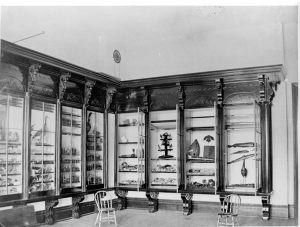 necessary to bring the museum’s collection under one roof. This gift to the people of Battle Creek given in trust to the City of Battle Creek was in memory of Mrs. Kingman’s late husband and state legislator, Senator A. C. Kingman. However, before the museum could be built, land had to be acquired. Early in the planning,Mrs. Leila Post Montgomery donated 72 acres to the City of Battle Creek for the future campus. Other prominent Battle Creek citizens, Mrs. Charles Kolb, W. I. Fell, and Burritt Hamilton, also gave gifts of land to the City. This property eventually became known as Leila Arboretum and between 1924 and 1930, a design from landscape architect T. Clifton Shepard was implemented. A. B. Chanel, a local architect who also designed many buildings in Battle Creek, designed the Kingman Memorial Museum of Natural History in 1931.
necessary to bring the museum’s collection under one roof. This gift to the people of Battle Creek given in trust to the City of Battle Creek was in memory of Mrs. Kingman’s late husband and state legislator, Senator A. C. Kingman. However, before the museum could be built, land had to be acquired. Early in the planning,Mrs. Leila Post Montgomery donated 72 acres to the City of Battle Creek for the future campus. Other prominent Battle Creek citizens, Mrs. Charles Kolb, W. I. Fell, and Burritt Hamilton, also gave gifts of land to the City. This property eventually became known as Leila Arboretum and between 1924 and 1930, a design from landscape architect T. Clifton Shepard was implemented. A. B. Chanel, a local architect who also designed many buildings in Battle Creek, designed the Kingman Memorial Museum of Natural History in 1931.
In 1933, the Battle Creek Public School’s museum collection was moved to the museum and opened to the public. Unfortunately, plans for the other buildings were halted during the Great Depression and to this day have not been realized.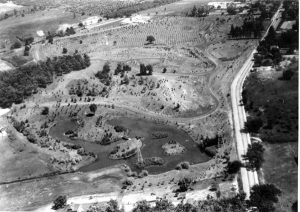
The second director of Kingman Memorial Museum was Mr. Brigham’s son, Edward Morris Brigham, Jr., who took the position in 1943 and held it until 1969. Like his father, Brigham, Jr. was an excellent collector and traveled around the world acquiring artifacts, some of which are very rare (e.g., the saber-tooth cat skeleton, from the original excavation at the LaBrea Tar Pits in Los Angeles, California, the Rector Collection of human embryos and fetuses, etc.).
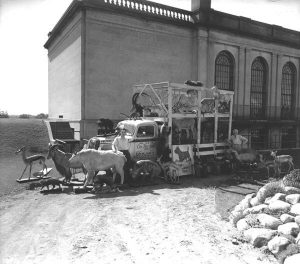 Kingman Memorial Museum was one of the first public museums to be owned and operated by a public school system in the United States.
Kingman Memorial Museum was one of the first public museums to be owned and operated by a public school system in the United States.
This relationship was advantageous to both institutions for many years. However, due to financial conditions and some new state taxing laws, the Battle Creek School Board began withdrawing its financial support of the museum; this eventually caused the museum to lose accreditation by the American Association of Museums. Following the board resolution in 1997, a Task Force/Advisory Committee was formed to look for alternative housing for the collection. Subsequently, a group of concerned citizens formed the Kingman Initiative, an alliance with the Calhoun County Parks and Recreation and the Farm Bureau, which occupies an historic grain elevator. The County Parks and Recreation Department provided management for a short period of time, but withdrew involvement in August of 2000 and in October the School District closed the museum’s doors to the public.
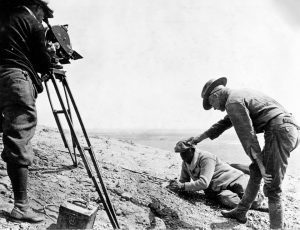 On September 7, 2000, with the purpose of saving the museum and its collections, members of the Kingman Initiative formed a board of directors to govern a new organization to be called Kingman Museum, Incorporated. It was recognized as a Michigan corporation on October 31, 2000. They began the processes necessary to organize, attain non-profit status, acquire and preserve the Kingman Memorial Museum (including its exhibits, collections, assets, and facility), ensure its permanence, and to maintain it in the Battle Creek community.
On September 7, 2000, with the purpose of saving the museum and its collections, members of the Kingman Initiative formed a board of directors to govern a new organization to be called Kingman Museum, Incorporated. It was recognized as a Michigan corporation on October 31, 2000. They began the processes necessary to organize, attain non-profit status, acquire and preserve the Kingman Memorial Museum (including its exhibits, collections, assets, and facility), ensure its permanence, and to maintain it in the Battle Creek community.
 On September 17, 2002, Kingman Museum, Inc. was made Successor Trustee of the museum building and its contents by the Calhoun County Probate Court. However, it wasn’t until April 2006 that conditions were met, and the Battle Creek Public Schools passed trusteeship of the collections to Kingman Museum, Inc.
On September 17, 2002, Kingman Museum, Inc. was made Successor Trustee of the museum building and its contents by the Calhoun County Probate Court. However, it wasn’t until April 2006 that conditions were met, and the Battle Creek Public Schools passed trusteeship of the collections to Kingman Museum, Inc.
On February 7, 2003, Kingman Museum, Inc. received the “determination letter” from the Internal Revenue Service verifying that KMI met the criteria to be an exempt organization; coincidentally, the doors to the “new” Kingman Museum were open to the public that same week.
